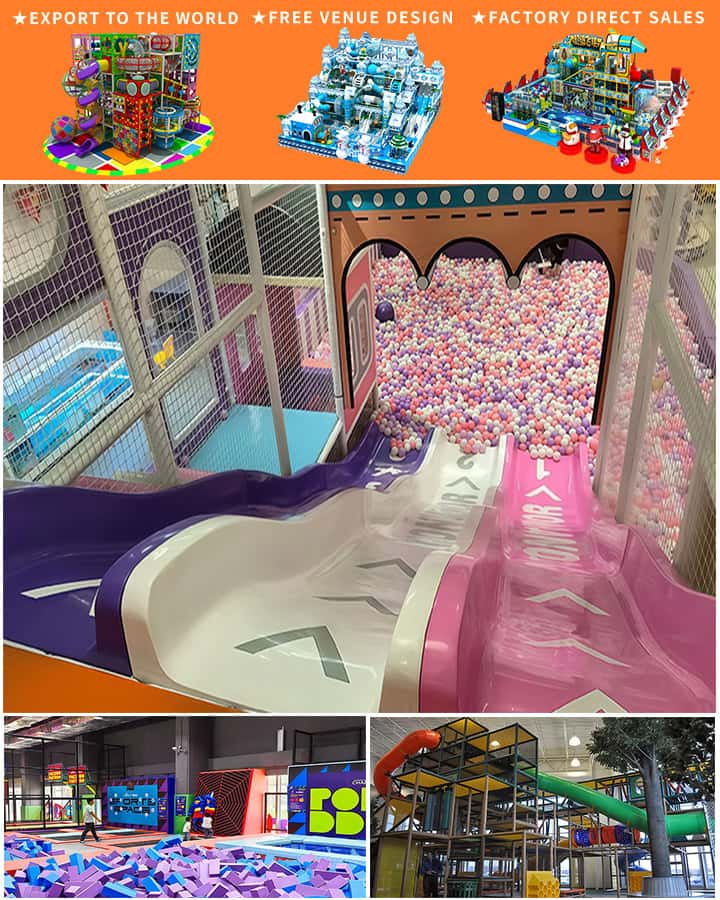Starting an indoor playground for kids can be an incredibly rewarding business venture. With the right planning and execution, such a facility can provide endless fun and entertainment for children while generating significant revenue. This article will outline a comprehensive business plan to help you navigate the process from conception to realization.
1. Market Research and Analysis
Before diving into the logistics, it’s crucial to conduct thorough market research. Identify your target demographic, understand their needs, and analyze your competition. Look into local trends, preferences, and spending habits of parents and guardians in your area. Additionally, assess the demand for indoor playgrounds by examining existing facilities, their amenities, and customer feedback.
2. Conceptualizing Your Indoor Playground
Define what sets your indoor playground apart from others. Consider themes that resonate with children, like superheroes, fantasy worlds, or jungle adventures. Think about the age groups you want to cater to; some playgrounds specialize in toddlers, while others might focus on school-aged children or even teenagers. Your unique concept will form the backbone of your marketing strategy and attract families to your venue.
3. Location, Location, Location
Choosing the right location is vital for the success of your indoor playground. Ideally, you should select a site with high foot traffic, such as a shopping mall, family entertainment center, or a standalone facility in a busy commercial district. Ensure the space is easily accessible and has ample parking. The size of the location will depend on the range of activities and equipment you plan to offer.

4. Budget and Funding
Outline a detailed budget covering all expenses, including leasing costs, renovations, play equipment, safety measures, staff salaries, utilities, marketing, and unexpected contingencies. Securing funding is critical, so explore various options such as personal savings, bank loans, investor capital, or crowdfunding. Make sure you have a clear financial plan before proceeding.
5. Design and Layout
Create an inviting and safe environment by focusing on the design and layout of your indoor playground. Collaborate with professionals to ensure the space is aesthetically pleasing and functional. Incorporate diverse play areas such as climbing structures, ball pits, obstacle courses, interactive games, and quiet zones for reading or resting. Prioritize safety by installing soft flooring, cushioned barriers, and regular inspection routines.
6. Staffing and Training
Hiring reliable and friendly staff is essential for maintaining a positive experience for both kids and parents. Recruit individuals who are passionate about working with children and providing exceptional customer service. Conduct thorough background checks and invest in comprehensive training programs focused on safety protocols, first aid, conflict resolution, and engaging children in fun activities.
7. Marketing and Promotion
Effective marketing can set your indoor playground apart. Develop a strong brand identity, including a memorable logo, color scheme, and tagline. Utilize digital marketing strategies such as social media campaigns, SEO optimization, email newsletters, and online advertising to reach your target audience. Partner with local schools, daycare centers, and community organizations to host events and offer discounts. Word-of-mouth referrals are powerful, so encourage satisfied customers to spread the word.
8. Operations and Maintenance
Establish efficient operational procedures to ensure smooth daily functioning. Implement a booking system for parties and private rentals, maintain cleanliness standards, and regularly inspect and maintain equipment to guarantee safety and longevity. Keep track of inventory, manage finances meticulously, and continually seek customer feedback to improve services.
9. Legal and Insurance Considerations
Consult with legal experts to navigate any permits, licenses, and zoning regulations required for operating an indoor playground. Obtain comprehensive insurance coverage to protect against liabilities related to accidents, injuries, property damage, or other unforeseen events.
10. Growth and Expansion
As your indoor playground gains traction, consider opportunities for growth and expansion. This could involve adding new attractions, expanding to additional locations, or diversifying services such as hosting educational workshops or offering membership programs.
Conclusion
Opening an indoor playground requires careful planning, dedication, and a deep understanding of your target market. By following this comprehensive business plan, you’ll be well-equipped to create a fun, safe, and profitable venue that brings joy to children and satisfaction to their families. Start today, and watch your dream of running a successful indoor playground become a reality!




